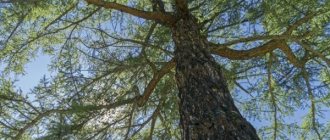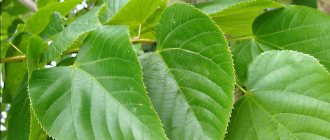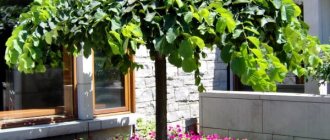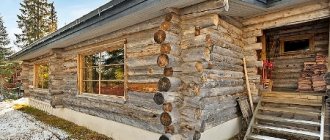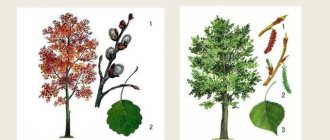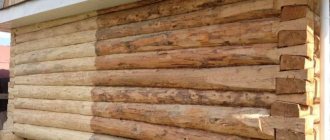Long-term natural processes contribute to the transformation of wood species. This concept can mean not only negative influencing qualities, but also positive ones. As a result of being under water for tens, hundreds of years, or even millennia, oak trunks acquire invaluable qualities, becoming extremely hard and receiving a unique color of a singed or even blackish tint.
Underwater, the integrity of oak is preserved due to a unique characteristic - the presence of a special tannin in the structure of the tree.
Bog oak is a component of a refined and expensive interior.
Features of the reaction
Changes in the physical and mechanical characteristics of wood associated with the passage of complex chemical reactions: leaching of water-soluble substances contained in the cell walls. The process has been proven by the results of numerous studies conducted by N. T. Kuznetsov back in the 30s of the last century.
As a result, it was possible to establish that stained wood contains 75% less water-soluble substances than natural wood. This indicates an increase in cell porosity and a decrease in their density, which results in an increase in the moisture content of the saturation limit, balancing shrinkage, and maximum humidity. It is this factor that explains the absolute shrinkage of boards or workpieces during drying of the sawing material.
The analysis data contributed to the development of thought and the formation of a new technology for drying wood and blanks made from it with a thickness of up to 22-32 mm in a convective or convective-microwave oven, or a vacuum-dielectric drying unit.
The use of advanced technologies has resolved the issue of temperature treatment of wood. There is virtually no internal or external cracking. Collapse in such cases is unacceptable.
The interesting concepts put forward by researchers and scientists do not end there. The study of the properties of stained wood is at the stage of processing geoanalysis data and continues its evolution in the world.
Description
In the north of the range there is a relatively low deciduous tree, reaching a height of 20-25 m and a trunk diameter of 90 cm. In the south and center of the range it reaches 42 m in height. The crown is cylindrical with a rounded top. The bark is dark brown to almost black, with deep furrows, the ridges are often broken into irregularly shaped blocks, and on young trunks it is smooth dark brown. The inner layers of the bark are yellow or orange. The shoots are red-brown, (1.5)2.5–4.5(5) mm thick, with brown felt pubescence, which disappears significantly or completely during the summer.
The apical buds are densely tomentosely pubescent, ovoid or ellipso-subterminal, 6-12 mm long, clearly pentagonal in cross section, reddish-brown, the edges are gray in color. Leaf petiole 25-70 mm, glabrous with sparse pubescence. The leaves are ovate or obovate, (80)100-300 mm long and 80-150 mm wide. Leaf blade with deep wide notches on each side and 2-3 lobes, of which the upper one is much larger than the lower ones, along the edges coarsely notched-toothed or almost notched-lobed, with teeth ending in a long spinous ending and with a relatively short and wide notched-toothed, or at the end of a shallowly lobed, terminal lobe. The foliage is bright red when blooming, then becomes silver in color, when fully developed it turns to green and turns orange-red in autumn. The abaxial side is pale green, more or less tomentosely pubescent over the entire surface and especially along the veins and in the corners between them; adaxial - glossy, dark green, naked.
Anther catkins 10-15 cm long, pistillate flowers and fruits almost sessile or on a short thick stalk, solitary or in twos.
The plush is in the shape of a deep cup or an inverted cone, 7-14 mm high by 12-22 mm wide, covered with oval light brown, slightly spaced scales, bare or finely pubescent, and covers up to ½ of the nut. The nut is brown, almost spherical or ovoid, finely pubescent, 10-20 mm high and 10-18 mm wide. Acorns ripen in the second year - from the end of August to the end of October, depending on the geographical location.
Features of oak extraction and processing
The process is complex and labor-intensive, and not every specialist can handle wood processing. Despite this, the products deserve the highest praise due to their qualities.
Important! If you plan to process or decorate the surface with stained wood, then try to prepare the material in advance. It takes more than one year to process wood.
To obtain such valuable material, water areas of significant volumes are examined, especially the bottom of reservoirs. Moreover, the work is carried out in very difficult conditions.
Golden Oak
The color of golden oak can be considered the closest to the color of natural oak, which has a light straw tint. To obtain a rich golden hue, the wood is varnished or lightly tinted.
Golden tones can be seen in other complex wood treatments. For example, in a rustic oak shade.
Rustic is a special wood treatment aimed at “aging”. Under its influence, the relief of oak wood increases, and the tips of the protruding wave crests are painted in darker shades. In nature, this effect is achieved by prolonged exposure to water and wind. Honey shades give way to caramel and the color of burnt sugar is deeply loved by designers. Although this treatment does not necessarily give a golden hue.
A golden hue can also be seen in sedan oak, which is also not a type of wood, but a processing technology.
In the interior, such shades of oak are combined with warm shades of ocher: straw, yellow ocher, red, light green, brown, dark red brown, gold, silver, dark chocolate color.
How is a tree brought to the surface?
Having discovered the trunk, the bog oak is lifted ashore. In this case, it is impossible to do without the use of technology, since one tree weighs around 10-20 tons. Before starting to saw the material, the wood pulled out of the water is assessed at the first stage for quality. Sometimes a tree that has been taken out of the water and prepared for processing is completely unsuitable for further work. As soon as the material is cut, the production of parquet, furniture, doors or window frames immediately begins. Untreated stained wood, kept under water for many years, quickly becomes unusable on the surface. Therefore it must be processed immediately. As you have most likely noticed, extracting bog oak is a labor-intensive process.
Details
Black oak for gifts
By the way, giving gifts made of black wood for special occasions later became a real tradition that lasted until the revolution. Cabinets, armchairs, and bureaus were given as gifts for official appointments and anniversaries. Chests, boxes, and figurines were given to beautiful girls for weddings. But the decoration of the rooms with bog oak wood indicated not only that the person was wealthy, but also his importance in society. Since this material was elite at all times, access to it still had to be won.
The traditional extraction and creation of products from bog oak wood has faced a lot of challenges over the past hundred years, because the resources of such material are not unlimited, and there are almost no reserves left in Europe. For this reason, before the revolution, the material mined in Russia was mainly sent to Europe, where interiors were made in royal courts - staircases, railings and other decorative items in the houses of august persons were decorated with bog oak.
For a very long time, they even tried to make such an oak using a handicraft method - the trunks were found in the water and pulled out manually to the surface, and then they created an industrial method for extracting elite material, which was used by the Moscow-Kazan Railway joint-stock company.
After this, due to the First World War, the extraction of bog wood had to be closed, and contracts with European residents were canceled. Over time, mining activity was revived from time to time, with varying degrees of success.
Completion of work
And so, in 1948 (February), the supply of timber to the USSR led to the fact that the process of extracting and processing oak became unprofitable, which is why the Saransk Republican office (and this is the only enterprise that was engaged in the extraction and improvement of bog oak), was abolished. So, in Russia, despite the incredible experience of mining and processing incredible material, everything was crossed out for 60 years.
Today, the technology of extraction and processing has been revived again, although this is only available to experienced craftsmen. This is a very long and complex process that requires large amounts of energy and resources. Previously, before the start of the season, specialists will examine several hundred kilometers of river channels, analyze the features of the banks, depth, flow speed and composition of the river bottom.
In places where deposits are suspected, at different depths, scuba divers literally begin by touch to explore the river bottom in search of trunks that have sunk, and also excavate the area around the found trees so that they can be lifted to the shore using modern technical means.
Afterwards, the raw materials need to be processed, transported, sorted and dried. And only after drying, a period of 3 years, the material is beaten for further processing. By the way, in Russia there is the only bog oak museum, which is located in the Republic of Mari El, Kozdemyanovsk (merchant house building).
Scope of application of the material
Even if you have never heard of such a material, you can imagine that this type of wood is used in not one, but at least five applications.
Due to the fact that bog oak is a rather rare and even more valuable material, it requires fine manual processing.
Most often, furniture and souvenirs are made from wood, which are doomed to turn into antique objects. It is worth noting that flooring or other types of coatings used in interior design have a long service life.
Bog oak is the most precious tree (7 photos)
The rarest wood in the world, which is a kind of precious material, is bog oak. A cubic meter of this wood costs an average of $2,000. The bog oak has two lives, one of which it lives on land, and the second under water.
This second life began many centuries ago, when, subject to intergalactic laws, rivers changed their course. Time eroded the shores, and trees from coastal oak forests ended up under water, where they remained until an inquisitive person discovered them.
Only in the post-Soviet space are such huge reserves of bog oak preserved. For example, in European countries for 100 years the discovery of a single specimen of bog oak has been an event. And such finds are reported in the media.
For 100 years, many enterprising people in all corners of Russia have been harvesting bog oak. Bog oak, as part of other firewood, was mainly used as fuel.
One day, having pulled the trunk to the surface and tried to process it, he was amazed at the beauty and strength of the resulting wood. While admiring, the man asked himself the question: what unknown force turned the familiar oak into a mysterious one, covered on the surface with torn pieces of coal, and inside hiding a strong, smoky, living, unique texture of the material? And he began to look for answers to his questions, working with bog oak and giving it a third life...
In Rus', furniture sets and souvenirs were created from bog oak, which now occupy pride of place in fine arts museums and antique salons around the world.
Not a single foreign furniture company can offer for public viewing products adequately made from natural bog oak. This is the prerogative of only Russian masters. Since from the beginning of the millennium to the present day, relict oak forests throughout the world have been completely destroyed, reserves of bog oak remain only in Russia.
Source
Is it possible to produce bog oak under artificial conditions?
Thanks to the development of innovation and the movement of technological progress, changing the natural characteristics, properties and performance of natural wood seems possible. Today, scientists are able to successfully imitate the stained wood color, maintaining aesthetic and durable characteristics, and achieving maximum moisture resistance.
Another option is staining oak at home. This option is simple and affordable and is ideal for those who want to get an unusual oak material with silver veins inside.
For this, stain is useful - a special mixture that imitates the color of natural moraine wood.
Apply the product in two stages: the first time on the surface of the wood at a slight slope, making strokes across the grain, the second - along. During work, use a flat, wide brush - a flute, intended for applying stain and simulating imperceptible natural transitions of tones. This is the best tool, characterized by softness and at the same time elasticity of the pile. Stains are often used to imitate the “stained oak” shade of laminate flooring.
Distribution and ecology
The species is native to eastern North America: from Ontario in the north to Florida in the south and from southern Maine in the west to northeastern Texas in the west, although it is found in small groups throughout almost all of North America.
Grows in forests on dry soil. It is a staple tree for Indiana dunes and other sand dune ecosystems along the southern shores of Lake Michigan, although it is not as common in the rest of its range. Accommodation altitude up to 1500 m.
Introduced into culture in England in 1800, found in culture in Western Europe. In Russia, the first introduction to culture was in 1843 in Nikitsky Garden, where it did not take root. There are in the Batumi Botanical Garden and in the Veselo-Bokovenkovsky Park in Ukraine.
What is included in wood stain?
Impregnation is made on the basis of three components:
- Water. Water-based compounds are better absorbed and are more quickly absorbed by wood. During the processing process, the wood needs to be dried, which takes more time. The result is a uniform shade that can be easily adjusted with a sponge. After waiting for the material to dry completely, it is covered with paint and varnish.
- Ethyl alcohol. It lends itself to instant evaporation, therefore it requires high-quality and quick application and caution in actions. Work with such impregnation only with special gloves and a mask. Otherwise, it will not be possible to achieve uniform tinting of the material. Therefore, craftsmen prefer to work not manually, but using special equipment - a spray gun.
- Alkidov. In addition to obtaining wood in the desired shade, alkyd stain allows you to increase the resistance of the material to external negative factors acting on the material. Therefore, coating the product with varnish can be skipped, except for shine.
Remember that home-dyed raw materials can be easily distinguished from natural bog oak. Therefore, artificial material is often used in baths, saunas, swimming pools, and other rooms with high humidity.
How to Grow Black Oak
Seed selection
It all starts with the selection of seeds. In our case, an acorn, although using a sprout will also work. By the way, despite its unpretentiousness, the plant still requires certain specialized care in the initial stages of its development.
In fact, it is not possible to simply plant an acorn in unprepared soil and wait for it to grow. Most likely, the planting will not break through the untreated soil. This is why we strongly recommend placing acorns in separate indoor pots.
But first, let's choose acorns. You can either buy them or assemble them yourself.
The main parameter is the absence of external deformations and the sufficient size of the grain itself. Shake the acorn; if the seed clearly hits the walls of the acorn, this indicates an unsuitably small size of the future plant. There is a high probability of death of the young planting.
Look for a seed that is large enough, without any visual defects.
Landing Features
Landing instructions:
- The seed should then be buried in a home pot with moist soil. The latter, ideally, should be collected next to the already spreading oak tree from which the acorn fell. But, if this is not possible, simple deciduous forest soil will do.
- Don't forget about regular water treatments. To speed up growth, you can always germinate an acorn in a piece of wet cotton wool.
- Note that within 730 days the oak only forms the root system. The emphasis is on the underground part of the plant, so you won’t see any serious spreading sprouts yet.
- When transplanting to open ground, be extremely careful with the roots of the plant. An inexperienced gardener can damage the central root, thereby wasting all the efforts of the oak tree.
If the work is done correctly, within the next couple of years you will notice unprecedented growth in your new pet.
During the care process, the only significant problem that you will have to deal with yourself is the fungus. Various fungal growths can indeed spoil the appearance and harm the health of the plant, but the foundation solution will leave no chance for infection. Per liter of liquid, take 10 grams of the active substance.
Why is stained wood popular?
Back in the days when man had just begun to explore the Earth, wood took a reliable ally position as the first available material. No matter how the conditions and the development of scientific and technological progress develop, natural wood has always been in demand, and this trend will remain leading for many centuries to come. Eco-friendly wood is not only safe, but also gives the room a special charm and comfort.
Considering that ordinary wood has become not so interesting in recent years compared to other progressive materials, it’s time to collect laurels for stained wood. In terms of strength characteristics, the material resembles stone due to the properties obtained during the period of being under water.
The color of bog oak is not the main advantage that makes the material preferable in choice. Rested wood is not afraid of cold, moisture, or pests that destroy hectares of forest. Stained material does not require specific care or additional processing. At the same time, it remains the standard of naturalness, environmental friendliness, and purity.
Notes
- For the convention of indicating the class of dicotyledons as a superior taxon for the group of plants described in this article, see the section “APG Systems” of the article “Dicotyledons”.
- should not be confused with the oak species Black Oak, which grows in the southern part of the range of this species, but is significantly different from it and is called “water oak” in the USA
- Sander, Ivan L. Quercus velutina
: [English] // Silvics of North America: [English]: encycl. : in 2 vol. / Burns, Russell M.; Honkala, Barbara H.. - Washington, DC: United States Forest Service (USFS), United States Department of Agriculture (USDA), 1990. - Vol. 2: Hardwoods.
How does it happen that the result is stained wood?
The whole secret is in tannins, which, as a result of the formation of compounds with iron salts, are transformed into super-strong and durable ones. Stained oak boards can be called a reborn material with unique characteristics.
Interesting! Timber has been floated naturally down major rivers all over the world. The banks of the rivers were fortified with oak groves, and when the trunks fell into the water, they remained there to be naturally processed by the elements of nature. About 90% have already been processed, but some of the trees were washed away with silt and remained under water to this day, acquiring even greater value.
Unique characteristics
The oak lives its first life on the shore, the second in the water. The priceless wood is environmentally friendly - it got into the water in the pre-industrial period. After spending at least 300 years under water, bog oak acquires silver and fawn shades. And after 1000 years, the wood becomes almost black, although there are specimens with a purple tint, which allows the products to look even more original. This occurs due to the lack of oxygen supply due to the layer of sand and silt under which the tree rests, and high pressure. At this time, special chemical reactions take place and a natural preservative, tannin, is produced. Oak acquires amazing properties - it becomes hard, almost like stone and resistant to rotting and drying out, and no varnishes or paints are used in the manufacture of products - its texture and color are perfect.
The use of stained wood in construction
Guess why such a house will not be afraid of snow, rain, windy or frosty weather. All thanks to the “school of survival” that the wood underwent at the bottom of the bay, polynya, lake, pond or other body of water where it was located.
The main advantage of building from stained wood is environmental friendliness. It’s hard to imagine an even more natural material for constructing a residential building. Bog oak siding looks interesting.
What makes it a unique material, ideal for construction, is the lack of shrinkage during the drying process. Newly rebuilt housing is completely ready for use without risks to human life and health.
Where is bog oak mined?
Valuable bog oak is mined only in three countries: Russia, Ukraine and Belarus. Scuba divers look for wood in large bodies of water. It is located at the very bottom. Each trunk is searched manually. The location of valuable wood can only be approximate, so it takes time and resources to find it.
READ Mighty Canadian Maple
Oak trunks are pulled ashore using specialized equipment. The tree is heavy and can reach up to 50 tons. After raising the trunk, it is assessed and bucked. It is important to do everything efficiently and create the necessary conditions for storage, since the material can easily deteriorate.
Stained wood in the interior
To create a unique style they often use:
- larch;
- birch;
- oak.
The only requirements for the material used in interior decoration are environmental friendliness and aesthetics, and products made from bog oak fully satisfy these requirements. Often in mansions you can find parquet made of bog oak, which looks unsurpassed.
Wooden buildings of this type are not afraid of any fungi or insects. Therefore, such a coating does not require additional treatment with protective agents, and this is another plus for the environmental friendliness of the house.
The price of wood starts from 12,500 rubles per 1m3. It doesn’t matter how much bog oak costs, the main thing is that the material is of high quality.
Bog oak is a precious wood material with silver-gray noble veins that has absorbed history. For centuries and millennia, sunken oak trunks were located at the bottom of reservoirs, where, without access to air, through the process of staining they gradually acquired strength not inferior to stone. Nature itself, having given bog oak its durability and unique color range, determined its unique properties. You cannot find a more beautiful wood texture. That is why the significant difference between products made from bog oak is that neither dyes nor varnishes are used in their production. The color of the wood speaks for itself: delicate fawn shades indicate a staining age of 300-400 years, and the black color is acquired over more than 1000 years of staining.
Bog oak is a unique, rare and incredibly expensive wood. It is used to make luxury furniture, parquet flooring and even jewelry, which are extremely strong, unique and durable. It is valued all over the world and its fashion is everlasting, like the fashion for gold and diamonds. This is common knowledge. It is also generally known that the waters of Belarusian rivers and lakes today store thousands of cubic meters of bog oak unclaimed.
In historical descriptions you can find the names of bog oak as “ebony” and “ironwood” . Such names are due to the properties of the wood, but we are talking specifically about oak seasoned under water. It is characteristic that in Russia there was no concept of “cabinet maker” - craftsmen working with elite wood were called “cabinet makers” . And today, following the centuries-old traditions of the master, they respect the natural uniqueness of each piece of material they work with, identifying and presenting its best qualities. Therefore, bog oak today is used not only and not so much as a finishing material, but also as a source of inspiration for creating genuine works of art.
Legends of oaks
In ancient times, bog oak was surrounded by a veil of mystery. According to legends that have come down to us, mermaids and mermen lived in its roots and under its protection. However, everything in the surrounding nature was then considered spiritual: boulders, springs, swamps, lakes, large trees and even wells. The world was alive, filled with power and magic. Well, the mysterious black oaks are even more so, because their entire life “after death” remained hidden under water. Even today, genetic memory reluctantly allows an impressionable person to travel alone among the rubble of bog oak in some remote corner of Polesie.
Fuming
For many hundreds of years, oak tree trunks that sank during floods or rafting lie at the bottom of rivers and oxbow lakes. They are partially or completely covered with sand and silt, which means that the wood is largely isolated from oxygen. In such conditions, the tree becomes as strong as stone. It undergoes a change in chemical composition, and at the same time it is treated with a natural preservative such as tannins. Tannins, of which there are plenty in oak wood, enter into a chemical reaction with iron salts dissolved in water. After such a complex and long process, the sunken tree is qualitatively transformed. Its wood acquires unique physical properties: it becomes not only durable and strong, but also amazing in color. After all, as you know, stained oak can be coal-black, brownish, and even with a turquoise tint. In any case, each of them is unique and somewhat exclusive, just like another creation of nature - amber.
Extraction and processing of natural bog oak.
If the harvesting of ordinary wood, be it pine, birch or backwood, rosewood, is a common operating process, polished by people over thousands of years, supported by proven technologies and a variety of technical mechanisms and equipment, then the deliberate harvesting of natural bog oak, both in ancient times and now, was and is being done very rarely and mostly exclusively when performing important tasks. Harvesting natural bog oak is a complex, labor-intensive process and qualifies as the extraction of a natural resource. After all, in order to cut down a tree, you can simply approach it at any time, determine its condition, quality, and cut it down. Moreover, this can be done by one person without excessive effort. And in order to obtain bog oak, it must first be found at the bottom of a body of water, for which it is necessary to examine significant underwater areas, sometimes in difficult conditions. Having found bog oak, you need to prepare it at the bottom for lifting. Then, using serious equipment or mechanisms, you need to lift multi-ton mining to the surface, and the weight of bog oak can reach 10 and 50 tons. Having raised it to the surface, it must be moved to the place of bucking, and only after this can one begin to evaluate it as a material and to subsequent mandatory processing. After all, it often happens that a bog oak, which looked quite impressive under water and which required significant effort and expense to lift, was completely disappointing on the shore. Moreover, the bog oak raised to the surface must be urgently put into circulation, since it is practically reactivated after many years of being in an airless environment and can become unusable in a short period of time.
The approach to the extracted bog oak to the place of ascent to land also very often represents a serious amount of work. Since when loading and transporting ordinary wood, due to its significant volumes, work on constructing reliable access roads is economically justified, then when approaching, for example, a timber truck to the place where bog oak is loaded, it sometimes becomes an almost insoluble problem. To the place where each bog oak is lifted onto land, it is impossible to make a passage with a bulldozer and do not pollute the swampy places. Not to mention the fact that environmental workers can count down to the centimeter and piece by piece the damage caused to the environment in the coastal zone. And then the transportation of the extracted bog oak has to be carried out according to an individual decision in accordance with the parameters of the wood and taking into account the favorable conditions of transportation by water to the place of lifting onto land and loading onto a vehicle. Moreover, the logs of bog oak themselves are saturated with water to the limit and are almost twice as heavy as the same logs of ordinary oak, which of course complicates the work. But obtaining high-quality bog oak is still a long way off.
The most difficult issue lies ahead - storage and high-quality drying of bog oak.
The storage and drying of ordinary wood has been studied thoroughly; scientific works and treatises on drying ordinary wood, which have absorbed the results of the work of many generations and the collective work of many research institutes, constitute huge technical libraries all over the world. National and international norms and standards for ordinary wood have been introduced. But studying the issues of storing and drying natural bog oak to obtain the maximum yield of quality products is only at the initial stage. This situation significantly affects the cost of high-quality bog oak. You can listen to many opinions on this matter, but the fact remains that today there is no stable demand for natural bog oak. And this is due to the fact that, due to the very high cost of high-quality bog oak, there is no stable supply of it on the valuable wood market. Things reach the point of absurdity when a professional bog oak miner sells the finished material several times lower than the cost, in order to solve his financial issues, thereby putting natural bog oak on a par with the wood of valuable species of the lower level (teak, wenge). Moreover, he has serious competition from temporary workers who, having superficial knowledge about bog oak, and a thirst for profit after the barbaric treatment of bog oak at all stages of oak extraction and processing (tear up the coastal zone with tractors and oak trees, dump mountains of unprocessed oak under the scorching sun (and sometimes for the winter) on the shore, on barges, at storage sites, logs are thrown back into the water after long-term storage in the air, finished lumber is improperly stored for long-term storage, etc., etc.), as a result of the lack of demand for them the received material, they close the topic and sell to buyers for pennies what can be taken from it (what kind of energy can we talk about such material?), and the rest of the spoiled material is put into the furnace.
You cannot approach bog oak as if it were ordinary wood, with the usual, generally accepted standards. The main value of bog oak is the positive energy charge accumulated over thousands of years by the unique material in different worlds, in the most incredible conditions. And, of course, the way in which the process of extracting, processing bog oak, and manufacturing the final product occurs is of absolute importance. Such concepts as environmental protection measures when extracting bog oak, transparency of the entire chain of measures, gentle and advanced technologies, environmental friendliness, basic conditions for obtaining material from top-class bog oak, elite and unique products with active positive energy.
Over the past 20 years, thousands of enterprising people in the post-Soviet space have tried to set up a business in the extraction and processing of bog oak. It seems like there might be difficulties. He drove the tractor to the river, pulled out the oak tree, took it to the collective farm, and more recently to a private sawmill, sawed it, and sold it. But this simplicity is very deceptive. There is a known case when, in the 90s, about 700 m3 of natural bog oak was lifted and stored ashore during the navigation season. Several wagons were sent to the buyer, some were thrown back into the river in late autumn, and a significant part was used for firewood. And, unfortunately, there were many similar cases. Cars with wet bog oak were sent abroad, which also lost all its consumer properties at the final destination. Thousands of cubic meters of bog oak went into ovens or are still sunk in oxbow lakes and lakes, after a summer of storage under the scorching sun. It will be very difficult to obtain high-quality material during repeated lifting and processing.
And quite recently (2006-2009) there was a case when a financially prosperous enterprise, which has its own floating craft with lifting equipment, its own solid production base, equipped with a modern set of imported equipment, with the great desire of a serious businessman to organize the extraction, processing and production products made from natural bog oak, due to the lack of qualified specialists, about 100 m3 of ready-made lumber (20-50 mm boards) from natural bog oak were sent for fuel. And from the remaining 150 m3 of finished lumber, they were subsequently able to select about 30 m3 of material with acceptable consumer properties and a huge cost as a final product.
Bog oak is a very delicate material . From the very moment he was discovered, he requires very careful treatment. A barbaric attitude towards him is unacceptable. In this case, you should not be surprised if, at first glance, a beautiful trunk presents surprises in the form of unexpected patterns of frost cracks or the colorful ugliness of an initially unnoticeable, but over time, causing frost-killing cracks. And let it not be a surprise in this case that there is a large amount of material obtained with poor geometry and low quality characteristics. Bog oak is an unusual material. He loves a very neat, careful attitude. Many factors that are normally assumed by the random owners of this wonderful material have no right to life at all. For example, mechanical damage during lifting and storage, the appearance of mold of any kind, internal, hidden cracks during and after drying, excessive, thoughtless waste during processing. Or even worse - the ugly storage and dumping of raised, unprocessed oak on the shore or in a warehouse... Yes, mountains of bog oak logs, and even more so multi-meter stacks of finished bog oak lumber look very impressive to the uninitiated at first glance. But the final positive result will be visible only after a considerable period of time and, of course, as a result of intense, labor-intensive and painstaking work, under the mandatory guidance of specialists.
These and many other facts indicate that the extraction and processing of natural bog oak requires increased attention and does not tolerate an unskilled, superficial approach leading to very tangible financial losses and irretrievably lost time.
Production of furniture from stained wood
The following are best suited for such purposes:
- oak;
- larch;
- birch.
When describing furniture made of bog oak, a simple name is appropriate - “exclusive material”. The tone and texture of natural wood is unique. The depth of color varies: from light gray to black-blue tones, from pale pink to amber shades.
Interesting! Craftsmen compare the pattern of bog oak slices with a map of the starry sky - the same unimaginably beautiful picture.
Unmistakably, such furniture is an unobtrusive but pronounced sign of the taste and specific level of well-being of the owner of the house.
Description of oak
This is a branchy oak with a lush, spreading crown; the tree needs a lot of space and casts a thick shadow. The plant does not need care. Do you want to plant an oak tree? Then you will need an acorn or purchase a seedling for growing. This method of growing is also typical for: white and fluffy oak.
The tree is known for the shape of its leaves, divided into lobules, and its nut-like fruits, called acorns, in a dome-shaped plate. Small shrub oaks are also common, growing up to two or three meters high.
The tree belongs to the Beech genus - it is a deciduous perennial. Grows in the northern regions and middle zone.
The oak is endowed with simple pinnately divided or entire leaves. The flowers of this tree are inconspicuous and small, unisexual.
Black oak growth
The tree grows slowly, until it reaches 80 years of age it grows higher and higher, and then begins to grow wider. Loves sunlight. By forming a deepened central root structure, the oak provides rich growth to the stump.
Oak tree species, such as the common oak, are resistant to drought and frost, and are also a little fussy about soils. The fruits begin to appear from the age of fifteen. On those trees that grow in open areas, acorns appear more often.
Application and beneficial properties
Oak wood of increased strength, vitality and durability, and has an original cross-sectional pattern and does not rot. Thanks to these properties, the material has gained recognition in various industries: in underwater structures, shipbuilding, carpentry and furniture production, carriage building, house construction, etc.
The dried bark of trunks and branches is used to rinse the mouth for many diseases, and also helps with burns. The fruits of the tree are suitable for making coffee surrogate.
Velvety Oak
Velvety oak is a beech species. A powerful medium-sized tree with luxurious velvety oak. This deciduous oak is endowed with a straight, branched trunk and a dense, round crown.
The color of the bark varies from dark brown to gray, black, and light. Branches range in color from red to brown and gray. The leaves are short-petioled or lobed, large or medium-sized, short and pointed or elongated and rounded.
With the arrival of autumn, green foliage turns red, orange or yellow. At the end of spring, the tree produces flowers with pointed petals. Their color is blood brown.
When the tree is pollinated, fruits with a bent plus are formed. The root of the plant is long, straight, without third-party branches.
Manufacturing of products from stained wood
Products made from natural wood that have undergone centuries-old natural processing are widely available on the market. From bog wood they produce:
- stairs of any shape;
- windows “stained oak” (shade);
- window sills;
- furniture panels;
- flooring;
- Wall panels;
- tinted doors “stained oak”;
- siding and other materials for exterior construction and home improvement.
Stained wood is an interesting solution for creating a room in a Scandinavian style.
It's nice to look at the interior when there is something unusual in it. Stained wood is the element that fully meets the needs of the designer, creating new and new things to improve human comfort.
